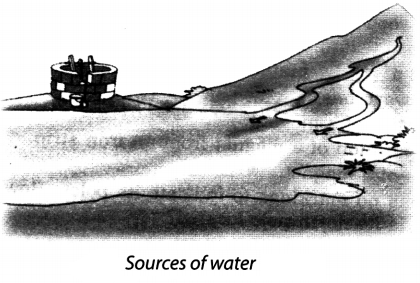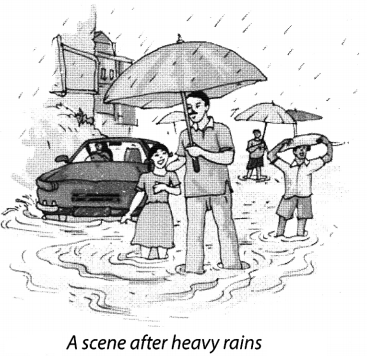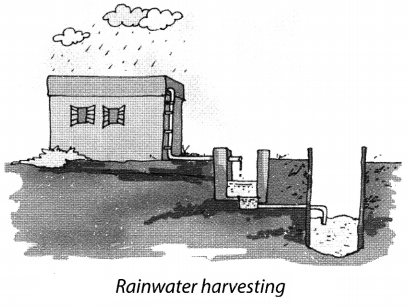On this page, you will find NCERT Class 6 Geography Chapter 2 Notes Pdf free download. CBSE Class 6 Social Science Notes Geography Chapter 2 SST Globe Latitudes and Longitudes will seemingly help them to revise the important concepts in less time.
Globe Latitudes and Longitudes Class 6 Notes Social Science Geography Chapter 2
CBSE Class 6 Geography Chapter 2 Notes Understanding The Lesson
1. The shape of the Earth can be understood by the globe. The globe is an imaginary shape of Earth.
2. Two points on the globe through which the needle passes are two poles – above side the North Pole and below side the South Pole. Both pins of globe can be imagined as ‘axis’. The globe can move towards west to east, as the Earth moves.
3. Another imaginary line running on the globe divides it into two equal parts. This line is known as the northern half part is called the Northern Hemisphere and southern half is called the Southern Hemisphere.
4. All parallel circles from the equator up to the poles are called parallels of latitudes. Latitudes are measured in degrees.
5. All parallels north of the equator are called ‘north latitudes’. Similarly, all parallels south of the equator are called ‘south latitudes’. Generally, this is indicated by the letter ‘N’ or ‘S’.
There are four important parallels of latitudes:
- Tropic of Cancer – 23 1/2°
- Tropic of Capricorn – 23 1/2°
- Arctic Circle – 66 1/2°
- Antarctic Circle – 66 1/2°
6. The area between the Tropic of Cancer and the Tropic of Capricorn receives the maximum heat and is called the Torrid Zone.
7. The area between Tropic of Cancer and the Arctic Circle in Northern Hemisphere and the Tropic of Capricorn and the Antarctic Circle in the Southern Hemisphere have moderate temperatures. These are therefore, called Temperate Zones.
8. The area of Arctic Circle of both side towards the North Pole as well as the South Pole are called Frigid Zones. These areas are very cold.
9. The Prime Meridian represents zero degree longitude. The longitude in the Eastern Hemisphere are designated at degrees east such as 10°E, 20°E, 30°E and so on till 180° and similarly in Western Hemisphere.
10. Degrees are further divided into minutes and minutes into seconds. Minutes are shown as single apostrophe (‘) and seconds are shown as double apostrophe (“).
11. When the Prime Meridian of Greenwich has the Sun at the highest point in the sky, all the places along this meridian will have mid-day or noon.
12. The Earth rotates 1° in four minutes, 15° in an hour and thus 360° in about 24 hours.
13. The local time of places which are on different meridians is bound to differ. It is, therefore, necessary to adopt the local time of some central meridian of a country as the standard time for the country. In India, the longitude of 82 14 °E is treated as the standard meridian. The local time at this meridian is taken as the standard time for the whole country. It is known as the Indian Standard Time (1ST).
Globe Latitudes and Longitudes Class 6 CBSE Notes Important Terms
Globe: It is true and imaginary model of the Earth.
Geoid: It means shape like the Earth.
Axis: It is an imaginary line. Earth rotates on Axis.
North Pole: North end of the Axis is called the North Pole.
South Pole: South end of the Axis is called the South Pole.
Longitudes: The lines running in north-south direction joining with the North Pole and the South Pole.
Latitudes: These lines are drawn parallel to the equator and are called Latitudes.
Equator: It is an imaginary line on globe, west to east and divides the Earth into two equal parts.
Torrid zone: The area between the Tropic of Cancer (23 1/2° N) and the Tropic of Capricorn (23 V2 0 S) is called the Torrid zone. Equator lies in the middle of the Torrid Zone.
Frigid Zone: An area of the Earth which is very cold, where Sun rays are always slanting and provides less heat is called Frigid Zone.
Prime Meridian: It is the 0°’ longitude and divides the Earth into eastern and western hemispheres.
Greenwich Meridian Time: It is the meridian passing through Greenwich in London. The local time of all places is linked to the Greenwich Meridian Time.



